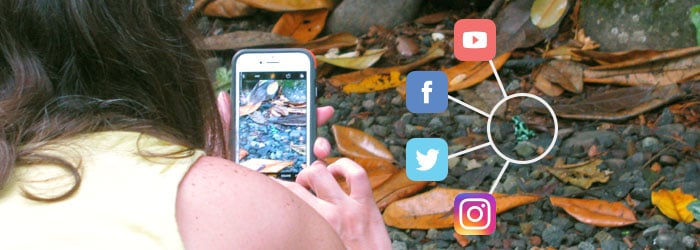Group travel and social media: ways to increase participant engagement
In an increasingly internet-centric world, marketing advice seems to funnel through one concise – albeit vague – pointer: use social media. But what does that mean? Social media is a huge cultural vehicle, with countless ways to set and measure goals, across a variety of channels, to a vast cross-section of audiences and markets. Not only that, the particulars of your social media strategy rely entirely on wading through the multitude of options and figuring out which unique combination is best for you. It’s overwhelming, to say the least.
So, to provide some early and actionable guidance in determining how you can “use social media” as a travel planner, here are some ideas to jumpstart your success.
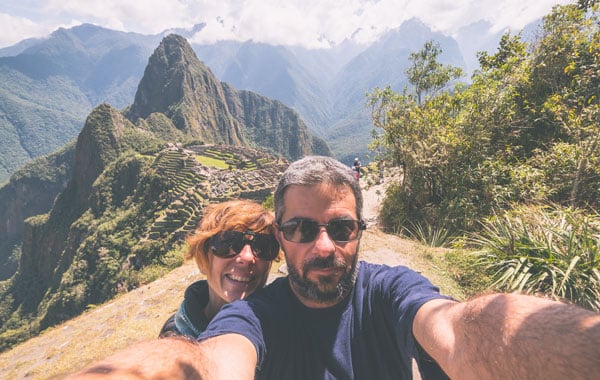
1. Social media to get the word out
Ultimately, social media is a connecting tool – and the more you use it, the more connections you create in your network. This means that social media can expand your sphere, and bring in new people interested in traveling. So if you’re looking to boost enrollment…
-
Reach out to like-minded organizations whose constituents might want a travel opportunity like yours. If it’s the right fit, they might be willing to share your post. Do some research first: know your market, and the social media style of the organizations you want to connect with. Make sure to post relevant and interesting content on your own account throughout this process! You want to position yourself as someone with something to offer.
-
Track hashtags related to your destination and trip interests to seek out new people who might be interested in signing up. If you find people who seem like a great fit, start a conversation with them. Make sure to be personable, professional, and low-pressure. Talk about what you have in common! Even if they don’t enroll on your trip, new opportunities might arise from expanding your network.
-
Consider a campaign: if you sustain interest over a series of posts with creative messaging or imagery, they’re more likely to gain traction through sharing. You may not go “viral,” but your posts will be seen by more and more new eyes. (We recommend the occasional goofy animal photo to give you some tread.)
-
Make it personal, especially if you’re traveling with the group as a leader. If you let people get to know you, they are more likely to want to travel with you. Instead of posting a written message, deliver it to your phone camera and post it as a short video. Or, include photos of yourself in the field when you post a written message. You want your followers to know your face and your story – and most importantly, your passion!
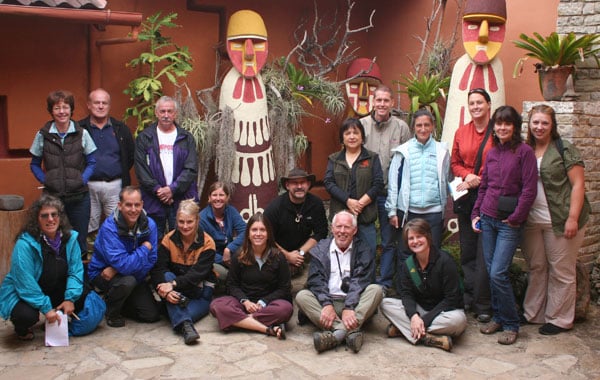
2. Social media to bring your group together
Travel and social media have one key characteristic in common: they both bring people together in a strong group bond. Take advantage of this commonality by using social media to extend the travel experience before and after the trip, and in turn establish a sense of community.
-
Before departure, create a Facebook group and invite all your participants to take part. You can use this space as a way to easily disseminate information about your upcoming trip. This works as a quick and simple way to communicate logistical details, but it also serves as a “hype” tool. You can share pictures, link articles, and ask questions that engage your participants, encouraging their excitement for the trip.
-
You can also use a Facebook group as a way for participants to get to know one another before departure. This can be especially useful to you, as the group leader. Your interactions on social media will help you know more about your participants before you go into the field together, and allow you to better understand and meet their needs while traveling.
-
After the trip, participants can use the Facebook space as a way to share photos, stories, and reflections from their experience. This also keeps travelers connected after they return to their “normal life” – allowing for easy opportunities to reminisce!
This kind of community support helps you sustain momentum for future trip planning, and provides an inviting and interactive framework to attract repeat and new participants.
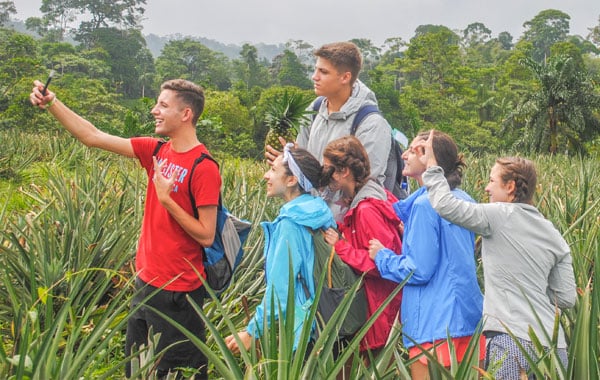
3. Social media to support your content
Depending on your constituents, you may or may not need to develop content for your travelers. In the case of educators, social media offers a unique opportunity to enhance curriculum and student engagement, especially since young people are more connected with social media than any other demographic. But even if you’re not an educator, some of these tips could be adapted for the lifelong learners traveling with you!
-
Consider the different social media channels and how they can serve your curriculum. If you’re a science educator, have your students use Instagram stories to document their investigations in the field, with each picture in the sequence representing a different stage of the scientific method.
-
Create a scavenger hunt that requires visual documentation through pictures and video (although you may not post the results on social media until after you arrive home). Get creative about what knowledge and skills you want your students to demonstrate!
-
Engage with students back home who weren’t able to go on the trip. When you do nightly briefs in the field, use wi-fi to upload photos and videos that report on the day’s discoveries. If your technology (and time zone) supports it, you could even do a live Q&A with Facebook or Instagram Live that brings the field to your students back home, and empowers your traveling students to share their experiences.
-
Challenge the students to create videos that demonstrate what they’re learning in the field, and create a class YouTube channel. Language students, for example, can interview local guides in the target language. Students in any discipline can become the “teacher” as they show and narrate what they’ve been learning. You can in turn use these videos to promote the value of educational travel, and grow your program.
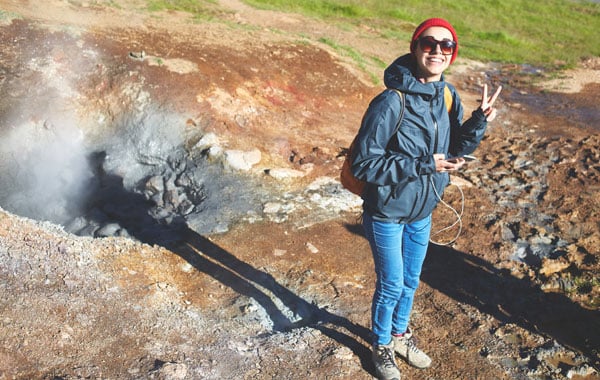
No matter your market or trip interests, social media has a world to offer travel planners during all stages of the process. Go forth and figure out the best ways it can help you meet your goals!
Please note: with all use of social media, be sure to pay attention to privacy settings and best practices for online sharing with regard to your market – especially students. In the field, be aware of cellular data settings to avoid high costs.
Photos by Christa Markley, Sandy Doss, and Ashley Loza


